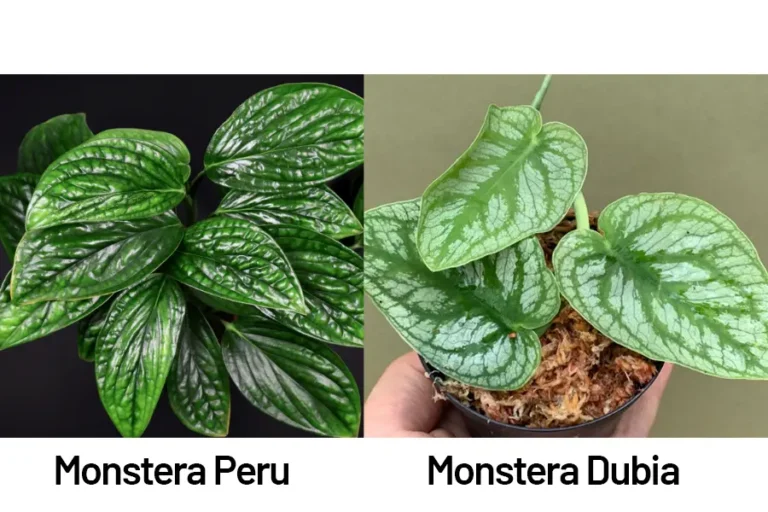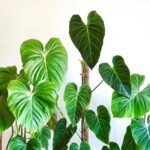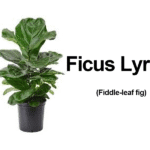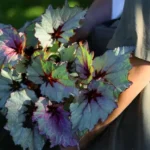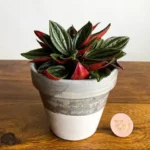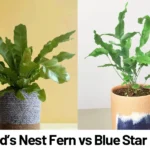Monstera Peru vs Monstera Dubia: A Clear Guide for Indoor Plant Lovers
With the explosion of interest in aroids among indoor gardeners, the Monstera genus has taken center stage. While classics like Monstera deliciosa remain popular, enthusiasts and collectors are now gravitating toward lesser-known species like Monstera karstenianum (commonly known as Monstera Peru) and Monstera dubia. These two plants are frequently confused because of their climbing growth habits, textured leaves, and placement in the same genus. However, despite their surface-level similarities, they are quite distinct in appearance, growth behavior, and care needs.
This article compares Monstera Peru and Monstera Dubia specifically for houseplant lovers and beginner gardeners, helping you recognize the crucial differences and choose the right plant for your home environment or collection.
Quick Comparison Table: Monstera Peru vs Monstera Dubia
| Feature | Monstera Peru | Monstera Dubia |
|---|---|---|
| Botanical Name | Monstera karstenianum | Monstera dubia |
| Plant Family | Araceae | Araceae |
| Native Region | Peru, South America | Central and South America (primarily Costa Rica, Panama, Colombia) |
| Leaf Shape & Size | Thick, rigid, lance-shaped leaves with deep ridges; 4–8 inches long | Flat, heart-shaped leaves with silver variegation; 3–6 inches when juvenile |
| Growth Habit | Upward-growing, bushy climber; moderately fast | Shingling climber; slow to moderate |
| Stem Structure & Identifiers | Round, thick stems; leaves stand out from the stem | Very flat vines that press tightly to surfaces; leaves overlap as they shingle |
| Light Requirements | Bright, indirect light (6,000–12,000 lux) | Bright, indirect to medium light (5,000–10,000 lux); tolerates lower light |
| Watering & Humidity | Allow top 1–2 inches to dry; thrives in 50–70% humidity | Keep lightly moist; prefers high humidity (60–80%) |
| Pet Safety / Toxicity | Toxic to pets (contains calcium oxalates) | Toxic to pets (contains calcium oxalates) |
| Price & Availability | Medium price; increasingly available | Higher price; less commonly found in nurseries |
Key Differences Explained
Visual Appearance & Growth Structure
One of the most noticeable differences between these two Monsteras lies in their leaf and growth appearance. Monstera Peru has thick, glossy leaves with deep ridges and a distinctly textured surface. The leaves emerge slightly upright or outward, rather than lying flat against a surface. In contrast, Monstera Dubia is famous for its ‘shingling’ behavior—its juvenile leaves grow flat against a vertical surface, overlapping with one another in a tight formation. These small, heart-shaped leaves often have an attractive silver-green marbled variegation, especially in lower-light spaces. As Monstera Dubia matures, its leaves undergo a dramatic transformation, elongating and fenestrating to resemble typical adult Monstera patterns, though this is rare in home environments without large climbing surfaces.
Space Suitability & Display Options
Your available space can determine which of these two plants is more suitable. Monstera Peru is excellent for small to medium pots and does not require a climbing structure to thrive, though it benefits from one. It can be kept bushy and compact indoors. On the other hand, Monstera Dubia needs a vertical mount or moss pole to climb, and without a flat surface to attach to, it may fail to thrive. This makes it ideal for mounted displays or vertical plant walls but less suitable for shelf display in tight spaces. Additionally, Dubia’s shingling makes it a unique conversation piece, especially for plant collectors seeking an exotic look.
Care Complexity & Environment
In terms of care, both plants demand intermediate attention, but Monstera Peru is slightly more tolerant of average indoor environments. It can handle moderate humidity (50–60%) and is less particular about consistent moisture, as its leaves retain water more efficiently due to their thickness. Monstera Dubia, in contrast, enjoys consistently humid air (60–80%) and moist soil but is prone to issues if overwatered or under-humidified. A home with a humidifier or naturally higher humidity—such as a bathroom with bright light—is typically better suited to growing Dubia successfully.
Availability & Cost
Monstera Peru is becoming more widely available in plant shops, online retailers, and big-box stores, especially as a mid-tier collector plant. Its price is moderate ($20–$40 for a young specimen). Monstera Dubia, however, tends to be less available and higher priced ($40–$80), reflecting both demand and the difficulty of propagation. While prices are declining as propagation increases, it’s still considered a rare plant by casual collectors.
Which One Should You Choose?
Choosing between Monstera Peru and Monstera Dubia ultimately depends on your home setup, aesthetic preferences, and care commitment. Here are some plant-pairing recommendations based on common needs:
- Best for Beginners: Monstera Peru is more forgiving and adapts well to modest indoor conditions. If you’re new to houseplants, start here.
- Great for Small Apartments: Both species can stay compact, but Monstera Peru does not require wall space or a board to grow—making it better for shelves or tabletop containers.
- Ideal for Vertical Decor: If you’re building a vertical garden or want a mounted conversation-starter, Monstera Dubia’s shingling habit is visually striking and unlike most plants.
- Tolerant of Moderate Light: Both plants do well in bright, indirect light, but Dubia is more tolerant of slightly lower light levels (as low as 5,000 lux).
- Pet-Friendly Households: Unfortunately, neither is safe for pets. If your pets are prone to nibbling, protective placement or a pet-safe alternative is recommended.
Conclusion
While Monstera Peru and Monstera Dubia may share a family tree and climbing habit, their visual traits, habitat needs, and growth preferences differ enough to make the right choice relatively clear. For a resilient, textured-leafed plant that thrives on a shelf or desk, Monstera Peru is a solid pick. For a collector-worthy plant that turns your wall into a living work of art, Monstera Dubia is unmatched. Understanding these differences ensures that you not only choose a plant you love—but one that will love your space right back.
References
- Boyce, P. C., & Croat, T. B. (2020). The Genera of Araceae. Royal Botanic Gardens, Kew. Retrieved from https://www.kew.org
- Grow Light Database. (2023). Lux Levels for Common Houseplants. Retrieved from https://www.growlightmeter.com/lux-levels-plants
- The University of California Agriculture and Natural Resources. (2021). Toxicity of Common Houseplants. Retrieved from https://ucanr.edu
- Missouri Botanical Garden. (2022). Plant Finder: Monstera species. Retrieved from https://www.missouribotanicalgarden.org

